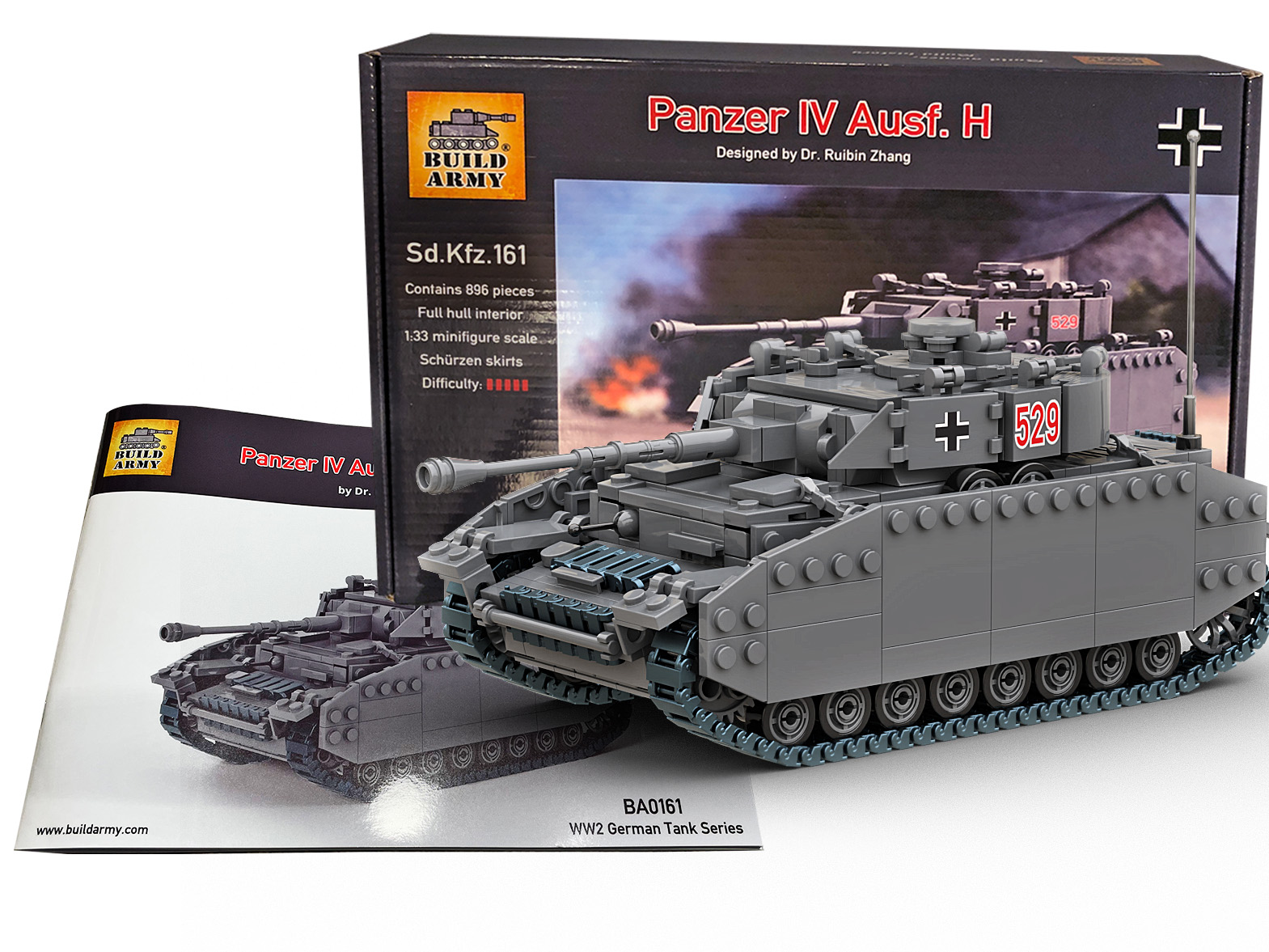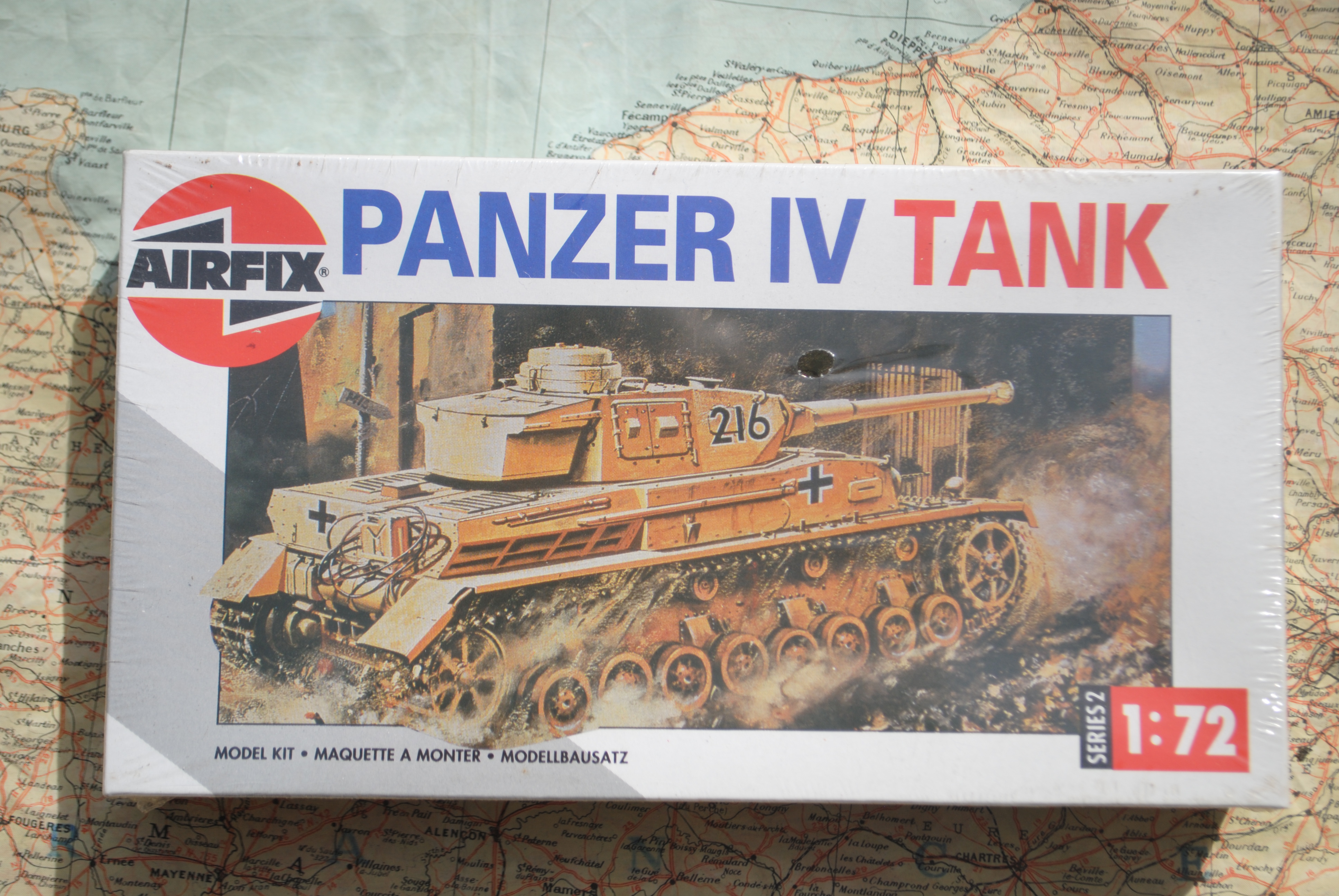Panzer Iv Tank - The Panzerkampfwagen IV (SdKfz 161, PzKpfw IV or Pz IV) was a German medium tank, the first variants of which were developed in Germany from 1933 as a medium tank designed to support infantry. The first prototype was created at the end of 1935/1936 and was used during the Second World War.
Originally the Pz IV tank was designed to support attacking infantry, while the Pz III was intended to deal with enemy armored vehicles. The main armament of the first versions of the Pz IV was a short 75 mm cannon (7.5 cm KwK 37 L/24), but it was not ideal for fighting enemy armored vehicles. In addition, it is armed with two machine guns. Variants of the Pz IV A to F1 featured this armament. The deployment of Pz IV tanks on the Eastern Front, where they collided with heavily armored and better armored T-34 and KV-1 tanks, showed the urgent need to create a tank capable of at least some balanced engagement with the enemy. Since the Pz III tank did not allow the installation of a powerful enough gun, and the development of new types took a long time, only the Pz IV tank remained, which was hastily armed with a 75 mm cannon (7.5 cm for the KwK 40. L/43). 7.5 cm KwK 40 L/48 for F2 and G versions, H and J versions). The production of the first F2 tanks began in March 1942. In total, about 9,000 of these tanks were produced by the end of World War II, of which more than 7,850 had long guns. Tanks were used even after World War II. They were used, for example, by the Czechoslovak army or the French army, which sold decommissioned tanks to Syria, which deployed them against Israel in the 1967 Six Day War.
Panzer Iv Tank

The only tank preserved in the Czech Republic is exhibited in the Military and Technical Museum in Lešan. The tank is in Ausf form. H.
Panzer Iv Full Size Tank Blueprints
Two tanks of this type from the arsenal of the Czechoslovak Army are preserved in Slovakia at the Slovak National Uprising Museum in Banska Bystrica and the Death Valley Memorial. Both tanks are reconstructions of the Ausf type. Post-Czechoslovak and post-war modifications survive.. A Panzer IV Ausf. G "413" in desert colors, Afrika Korps palm tree insignia, "Friederike" on gun barrel near mantlet
The Panzerkampfwag IV (Pz.Kpfw. IV), commonly known as the Panzer IV, was a German medium tank developed in the late 1930s and used extensively during World War II. Its weapon inventory was the Sd.Kfz. 161.
The Panzer IV was the most numerous German tank and the second most numerous German fully armored vehicle during World War II; During World War II, 8,553 Panzer IVs of all versions were built, outnumbering the StuG III assault rifle by 10,086. Its chassis was also used as the basis for many other combat vehicles, including the Sturmgeschütz IV assault gun, the Jagdpanzer IV self-propelled anti-tank gun, the Wirbelwind self-propelled anti-aircraft gun and the Brummbär self-propelled gun.
The Panzer IV saw service in every theater of war in which Germany participated and was the only German tank to remain in continuous production throughout the war. It was originally designed to support infantry, while the similar Panzer III was intended to fight armored vehicles. However, when the Germans came up against the excellent T-34, the Panzer IV had the potential to evolve with a larger turret ring to mount more powerful guns, so it switched roles with the discontinued Panzer III in 1943. I got Panzer IV. Extending its service life, various updates and design changes aimed at combating new threats. Generally, this involved increased armor or upgraded armor, but due to the need to quickly replace German losses in the final months of the war, design changes included simplification to speed up the production process.
The Modelling News: Build Review: Miniart's 35th Scale Pz.kpfw.iv Ausf. H Vomag. Early Prod June 1943
The Panzer IV was partially replaced by the Panther medium tank, which was introduced to counter the Soviet T-34, but it remained an important component of German armor until the end of the war. It was the most exported tank in German service, with around 300 sold to Finland, Romania, Spain and Bulgaria. After the war, Syria bought Panzer IVs from France and Czechoslovakia, which fought in the 1967 Six Day War.
Conceptually it was intended to be a support tank for use against enemy anti-tank weapons and fortifications.
Ideally, each tank battalion of a panzer division should have three medium panzer III companies and one heavy panzer IV company.

On January 11, 1934, the German army wrote the technical specifications for the "medium tractor" and handed it over to several defense companies. In support of the Panzer III, which was armed with a 37 mm (1.46 in) anti-tank gun, the new vehicle would have a short-barreled, howitzer-like 75 mm (2.95 in) gun as its main weapon. A weight limit of 24 tons (26.46 short tons) was allocated. The development was carried out under the name Begleitwag ("companion vehicle").
Pz Iv D Tank (2) 1/72 Armour Fast
Or BW, to disguise its true purpose, Germany was still theoretically bound by the Treaty of Versailles banning tanks.
The chassis was originally designed with six-wheel Schachtellaufwerk road wheel suspension (already adopted for German half-tracks), but the German Army changed this to a torsion bar system. By allowing the road tires to flex more vertically, it is designed to improve both off-road performance and crew comfort.
However, due to the urgent need for a new tank, the offer was not accepted and Krupp fitted it instead with a simple leaf spring double bogie suspension with eight rubber road wheels on each side.
The prototype had a crew of five; The rear of the hull housed the engine compartment, while the driver and radio operator, who doubled as the gunner, sat on the front left and front right sides. In the tower, the tank commander sat under his roof, the gunner stood on the left side of the gun, and the loader on the right side. A torque shaft between the driver and radio operator ran from the rear gimbal to the transmission box in the front housing. The turret moved 66.5 mm (2.62 in) to the left of the chassis line, and the shroud moved 152.4 to move the shaft that powers the turret, including the motor that turns it, away from the rotating base assembly. mm (6.00 inches) to the right. Due to its asymmetrical layout, the right side of the tank contains most of its storage volume, which is occupied by cabinets for storing ready-made ammunition.
Fleet Of Military Tanks Up For Auction
The first mass-produced version of the Panzer IV was Ausführung A (abbreviated Ausf. A, meaning "variant A") in 1936. It was powered by a Maybach HL108 TR and produced and used 250 PS (183.87 kW). SGR 75 gearbox with five forward gears and one reverse,
As its main armament, the vehicle carried a short-barreled, howitzer-like 75 mm (2.95 in) Kampfwagkanon 37 L/24 (7.5 cm KwK 37 L/24) tank gun, which was primarily a low-velocity gun for high speed. - shooting fire. - Explosive shells.
Firing a panzergrenade (armored vehicle) at 430 meters per second (1,410 ft/s) against armored targets, the KwK 37 can penetrate up to 43 millimeters (1.69 in), at a range of 30 degrees to 700 meters (2.30) . legs).

A 7.92 mm (0.31 in) MG 34 machine gun was mounted coaxially with the turret's main gun, and a second machine gun of the same type was mounted on the forward hull plate.
Panzer Iv At Military Museum In Belgrade, Serbia Stock Photo
The main gun and coaxial machine gun were fixed with Turmzielfernrohr 5b optics, and the hull machine gun with Kugelzielfernrohr 2 optics.
Ausf. The A chassis is protected by 14.5 mm (0.57 in) steel armor on the front plate and 20 mm (0.79 in) on the turret. It could stop only artillery units, small arms and light anti-tank shells.
Improvements included replacing the original engine with a more powerful 300 PS (220.65 kW) Maybach HL 120TR and a new SSG 75 gearbox with six forward and one reverse gears. Although the weight increased to 16 tons (18 short tons), this improved the speed of the tank to 42 kilometers per hour (26.10 mph).
And a new driver's shield was installed on the front plate of the straightened hull, and the hull-mounted machine gun was replaced with a closed gun port and shield cover.
Panzer Iv Ausf D Tank
A Nebelkerzabwurfvorrichtung (smoke rack) was fitted to the rear of the hull from July 1938.
This increased the turret armor to 30 mm (1.18 in), the tank weight to 18.14 t (20.00 short tons).
After installing the 40 Ausf. Beginning with Cs, chassis number 80341, the engine was replaced by an improved HL 120TRM. 140 Ausf last. Cs was released in August 1939.

Production changed to Ausf. d; This variant, of which 248 were produced, reintroduced the hull machine gun and changed the turret's internal gun shroud to 35 mm (1.38 in).
The History Of The Pz.kpfw. Iv In World Of Tanks
With the end of the German invasion of Poland in September 1939, the decision was made to expand production of the Panzer IV, which was accepted for general use on 27 September 1939 as Sonderkraftfahrzeug 161 (Sd.Kfz. 161).
During the Battle of France, in response to the difficulty of penetrating the thick armor of the British infantry (Matilda and Matilda II), the Germans tested a 50 mm (1.97 in) gun based on the 5 cm Pak 38 anti-tank gun. - He is
Panzer iv ausf d, tamiya panzer iv, german panzer iv tank, monogram panzer iv tank, panzer tank iv, heng long panzer iv, monogram panzer iv tank model kit, panzer iv tank for sale, panzer tank, cobi panzer iv, rc tank panzer iv, panzer iv tank model kit
0 Comments